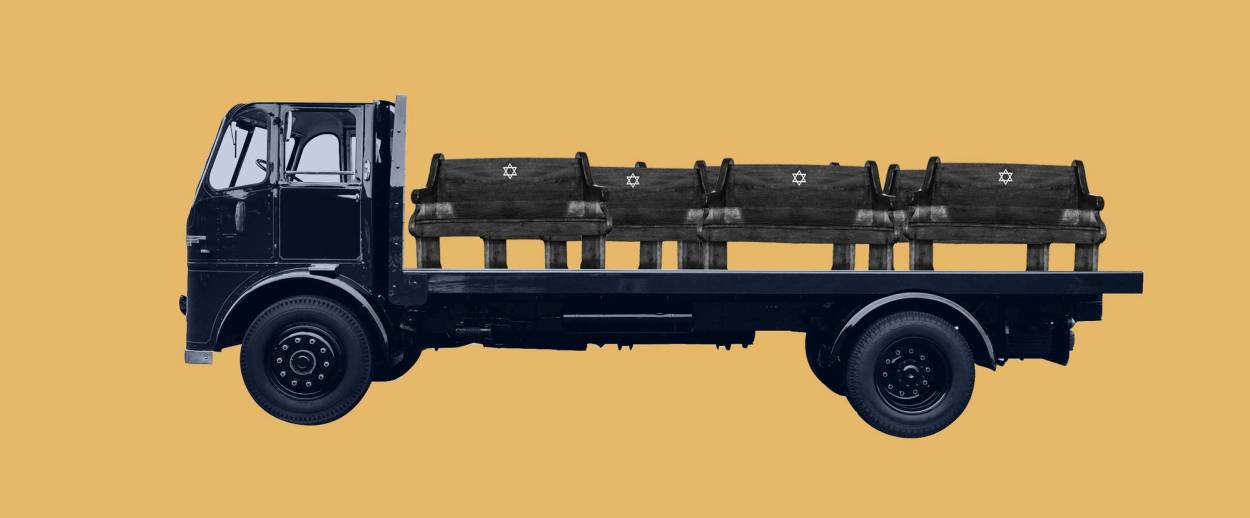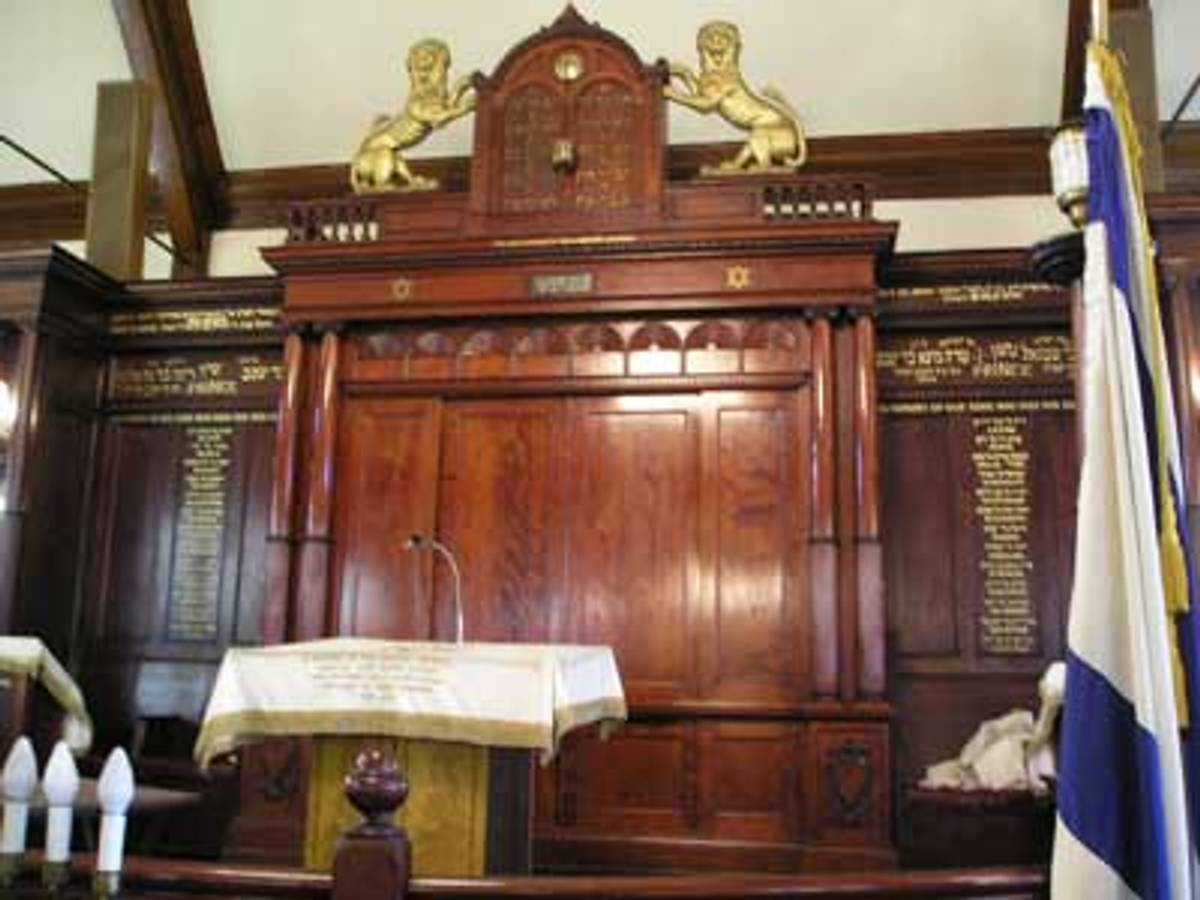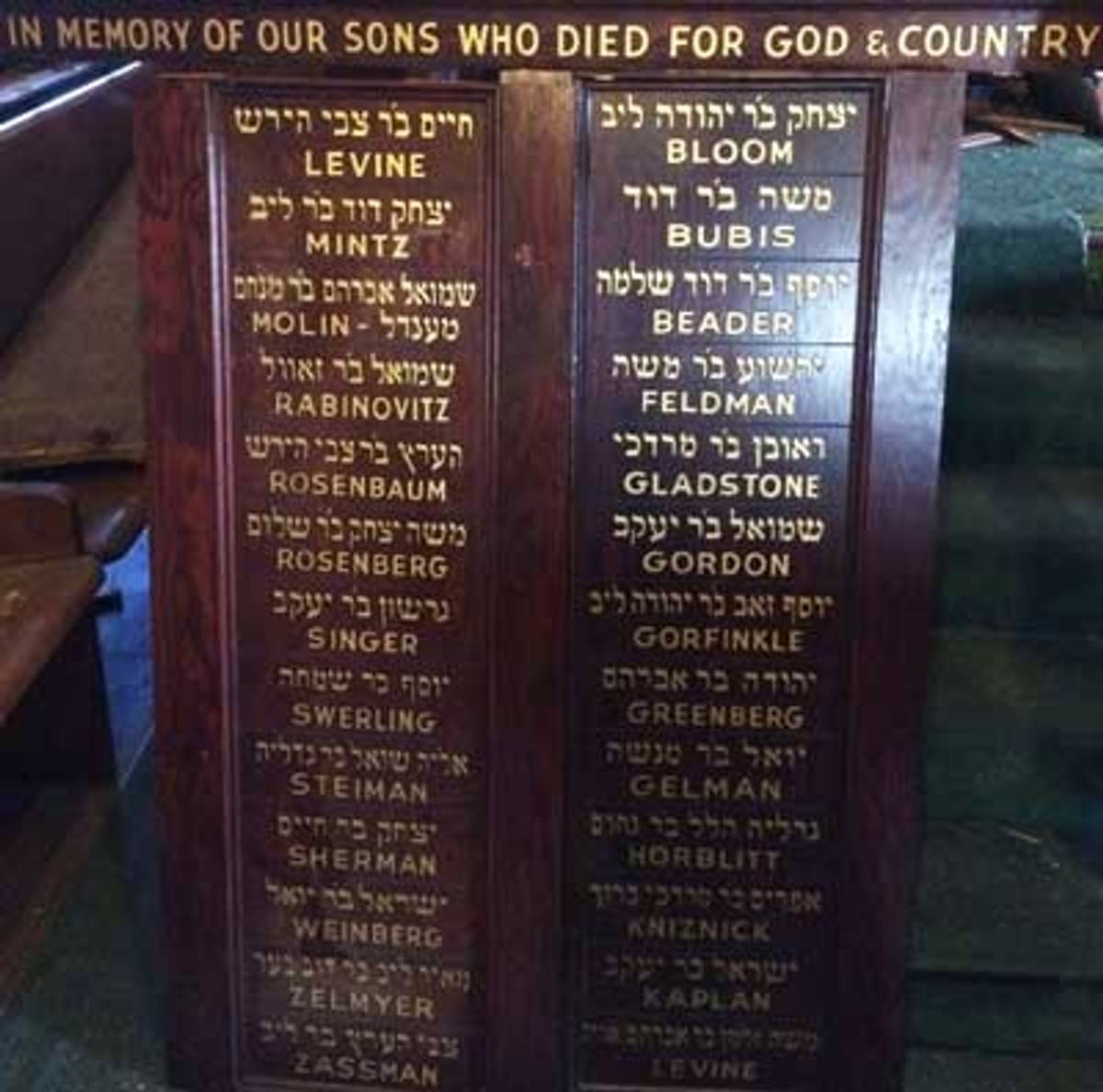A New Life for Ritual Objects
When a synagogue closes, what happens to its ark, its pews, its yahrzeit plaques—the unique, often handcrafted items that helped define it?




Ira Novoselsky wasn’t tremendously upset when Congregation Tifereth Israel in Revere, Massachusetts—the synagogue where his family had worshipped for generations—shut down in 2014.
“There were only 30 members left when we closed up shop,” said Novoselsky, a past president of the shul and a city councilor in Revere, a city, five miles from downtown Boston, whose once-vibrant Jewish community is now just a memory. “When even the old-timers stopped coming for the high holidays, we realized it was time to pack up.”
What kept him up at night, however, was the thought that a century-old handcrafted mahogany ark, hundreds of solid-oak, handmade pews, and other Jewish ritual objects would end up in a dumpster.

The wooden ark was made by Sam Katz, a Ukrainian-born woodworker who settled in upstate New York and later in Chelsea, Massachusetts, where he built about two dozen Torah arks—some with gilded Lions of Judah—for synagogues in the Boston area. Katz, who also hand-carved animals and decorations for carousels, had his work featured in the book Gilded Lions and Jeweled Horses: The Synagogue to the Carousel, Jewish Carving Traditions.
When synagogues close, there are already organizations that try to ensure that sacred objects like Torah scrolls find a new home. Prayer books are either buried in a genizah or matched up with new synagogues. And it’s easy to dispose of mundane everyday objects that have no religious significance, such as classroom furniture and lighting fixtures. But it’s another matter when it comes to ritual objects used in a religious context that have too much Jewish meaning to simply discard.
In late 2015, when Carol Clingan, a local Boston genealogist who was recording memorial plaques for the JewishGen Memorial Database Project, visited the shuttered Tifereth Israel—where her parents and grandparents had also prayed—she feared the beautiful aron ha-kodesh would be lost forever. She started working to find a home for the ark and in spring 2016 came to the Synagogue Council of Massachusetts, where Executive Director David Bernat recognized the opportunity. “There are shifting sands in the synagogue world because of demographics,” he said. “I felt a major priority was for us to be ahead of the curve. We started with congregations that are closing or merging and have objects such as Torah or arks that need to be placed.”
Last summer, the Synagogue Council rolled out Maavar (Hebrew for transition), a resource for synagogues in transition. Maavar is designed to provide advice and consultation to congregations navigating transitions such as closings, mergers, new buildings, unanticipated growth, and changes in clergy or major leadership. Its first project is the Maavar website, a clearinghouse for synagogues that are closing, which provides a list of sacred objects for sale or donation.

A suburban Boston synagogue came to the rescue when one of its congregants learned about the historic Katz ark at Tifereth Israel after reading an article last summer in The Jewish Advocate. “We thought it was an incredible mitzvah and something we needed to preserve,” explained Matt Langweber, president of Temple Shir Tikva, a Reform congregation in Wayland, Massachusetts. “Walking into this classic Orthodox Ashkenazi synagogue was a breathtaking experience that transported us to the past. We were awestruck by the beautiful ark and were afraid that if it wasn’t rescued at the end of the day, perhaps it would have gone into the dumpster.”
The Katz aron ha-kodesh now stands in Temple Shir Tikva’s Beit Midrash. Former members of Tifereth Israel and Shir Tikva congregants with ties to the old shul participated in the Friday night dedication ceremony held in December.
Tifereth Israel will soon be razed to make way for veterans housing. Its only remaining vestige will be a picture of the synagogue and a plaque honoring the 26 congregants killed in action during World War II, which will be housed in the new building.
Once the decision to close was made, Tifereth Israel began distributing its artifacts—including yahrzeit plaques, lecterns, and furniture— to families of former members, senior-living complexes, and a synagogue museum in neighboring Chelsea, as well as a collector of synagogue memorabilia. In exchange, a donation for the upkeep of its two cemeteries was requested. But unless someone comes forward shortly, hundreds of handcrafted pews are destined for the trash bin.
***
Synagogue closings across America can be attributed to several factors. “We are seeing a shift from synagogues with walls and pews to minyanim and havurot prayer structures and communities with less formality,” said Leonard Saxe, professor of Jewish community research and social policy at Brandeis University and director of the Cohen Center for Modern Jewish Studies and Steinhardt Social Research Institute. American Jewish Population Project findings show that populations are shifting, which also results in synagogue closings and mergers even as new ones are emerging elsewhere.
In the face of reality, closing synagogues have become resourceful in identifying new homes for their material goods. In some cases, like at Beth Isaac Synagogue in Trenton, Michigan, Judaica items have been redistributed to Jewish places of worship across the United States—from a local Michigan synagogue to a college Hillel in Vermont. Sometimes stuff finds its way to non-Jewish institutions: The entire bima of the Beth Abraham Synagogue in Auburn, Maine, for example, is headed to the Maine State Museum in Augusta for an exhibit on Maine Jewry.
Often it’s a non-Jewish institution that preserves Jewish memories. Case in point: Beth Israel Congregation in Latrobe, Pennsylvania, closed in 2015 when only seven families remained. Latrobe, a small city 45 minutes south of Pittsburgh, is the birthplace of the late Fred McFeeley Rogers, host of the children’s television series Mister Rogers’ Neighborhood. Serendipitously, the Fred Rogers connection saved the synagogue building and its treasured possessions.
“We all were devastated that we had to close the congregation down,” explained past President Mickey Radman, now 86, who was one of the younger members when the century-old synagogue shuttered.
The synagogue’s history is closely intertwined with that of the city of Latrobe. So when the Greater Latrobe Historical Society needed a new space, the synagogue building provided a perfect fit. A grant from the McFeeley-Rogers Foundation—which honors Fred Rogers’ legacy by supporting educational and charitable associations in Latrobe—enabled the society to purchase the building and preserve the synagogue’s legacy—including the bima, ark, yahrzeit plaques, and pews.
When Temple Meir Chayim in the small farming town of McGehee, Arkansas, called it quits after nearly 70 years, the building was sold to the New Life Christian Ministries Center. The aron ha-kodesh, stained glass windows, and pews remain in the building that locals still call “The Temple.” There’s also a shofar, which Rev. Paul Smith, pastor of the predominantly African-American church, hopes someone will teach him how to blow.
The Jewish Community Legacy Project also provided assistance, according to Rose Ann Naron, a lifelong member who coordinated the closing of Temple Meir Chayim. JCLP’s connections helped find homes for such items as Torah crowns and finials, menorahs and candlesticks, yahrzeit plaques, Torah scrolls, and prayer books. Recipients included the Goldring/Woldenberg Institute for Southern Jewish Life, area synagogues, and Camp Henry S. Jacobs Camp, a Reform Jewish summer camp in Utica, Mississippi.
Founded by former Jewish Federation executive David Sarnat, JCLP is a resource for small congregations. National partners include the Jewish Federation Association, Union of Reform Judaism, United Synagogue of Conservative Judaism, Network of Independent Communities, and World Union of Progressive Judaism.
“We work exclusively with small Jewish congregations that are the sole Jewish institutions in small towns and rural areas,” explained JCLP Senior Vice President Noah Levine. He estimates that 100-150 congregations fit the profile: aging congregations with fewer than 50 members, no children, and dwindling leadership.
Letting go of cherished objects is a dilemma for synagogues of all sizes, whether they are merging, closing, or simply renovating. It’s especially hard when deep emotional attachment is involved.
When Congregation Beth Am in Teaneck, New Jersey, merged with Temple Sinai of Bergen County in Tenafly, New Jersey, in 2011, one concern was whether a needlepoint tapestry handcrafted by the sisterhood would be prominently displayed.
“Temple Sinai was very gracious about displaying it in the sanctuary,” said Paul Seitelman, past president of Beth Am, who handled the transition process. Other items include a stained-glass Magen David, now displayed in the synagogue entrance, and photographs of Beth Am’s high school and confirmation graduates, which have been added to the photo gallery of Temple Sinai graduates.
Congregation Tikvat Jacob Beth Torah in Manhattan Beach, California—a 375-member-family Conservative egalitarian congregation—was formed through the merger of three Conservative congregations. Among the most challenging items to deal with from the merger were yahrzeit plaques and Torah covers, according to the executive director, Tamah Kushner.
Across the board, synagogues report that it’s a challenge to balance space constraints with the emotional complexity of memorializing loved ones. With few takers for large bronze memorial boards, yahrzeit plaques often end up trashed or returned to the families.
After two years, Kushner found a solution. Yahrzeit plaques connected to a living congregation member are mounted on a Lucite board; instead of lights, stones are placed in holes on the plaque. An electronic yahrzeit presentation may also be in the future.
As for the Torah covers, each original congregation was allowed to retain one cover. The three covers are now framed in shadow boxes that include the congregation’s name and the individuals for whom they are dedicated.
“Understand the emotional impact of objects,” said Kushner. “It’s not just a thing. Sometimes the passage of time made it easier for people to part with objects.”
***
Like this article? Sign up for our Daily Digest to get Tablet Magazine’s new content in your inbox each morning.
Paula Jacobs is a writer in the Boston area.